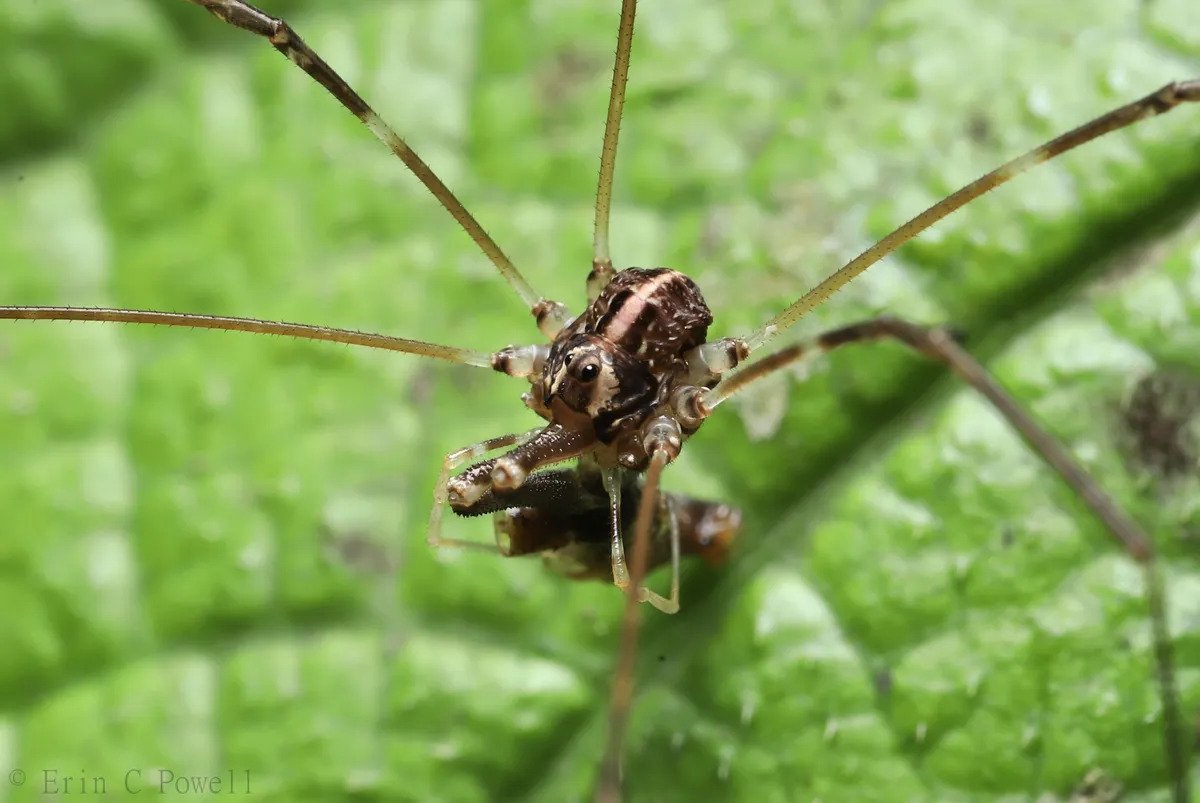Arachnids are out there doing arachnid things, from eating shrews to chasing people and even dreaming their sweet arachnid dreams. Now, a new study has looked at harvestmen, which feature three types of males – alpha, beta, and gamma – to look at why this separation into these categories may have happened.
Forsteropsalis pureora is a species of harvestman found in wet caves and forests in New Zealand. The males of this species exhibit a sexual hierarchy whereby the alpha and beta males possess large “weaponry” in the form of their jaws, known as chelicerae, which might make up 50 percent of their total weight. Alpha and beta males then use these impressive chompers to fight each other for females.
Gamma males, by contrast, can be up to seven times smaller than the alphas and betas. But what they lack in size they make up for in cunning as they sneakily look for undefended female harvestmen to mate with.
This species of harvestman is known to lose legs to escape predation, but cannot grow new limbs to replace them. The researchers found that if a male lost a leg during development, they were 45 times more likely to become a gamma male.
Missing legs as a juvenile might be the cause of turning into a gamma male.
Image Credit: Erin Powell
“Perhaps this is because they can’t get enough food for their development because their hunting is impeded,” said Dr Erin Powell, study author, in a statement. “Or maybe there’s no point in investing in big fighting weapons when they’re already disadvantaged when it comes to fighting,” she added. “So, the arachnids’ resources may be invested in other things, such as testes size, sperm count, or aerobic poise, to ensure they make the most of the mating opportunities they get.”
Powell suggests that this strategy of finding undefended females is better than failing in the alpha and beta male-on-male battles.
In the animal world, having three forms, like these alpha, beta, and gamma males, is known as trimorphism, and previous research suggests that it was mainly driven by nutrition and genetics. This new research highlights that environmental factors may also play an important part in determining which adult form these male harvestmen take.
“With their ridiculous towering weaponry and extreme male size variation, New Zealand harvestmen are both charming and puzzling,” said Powell. “We still have much to learn about their fascinating biology and they have much to teach us about the evolution of mating systems across animal taxa.”
The paper is published in Behavioral Ecology.
Source Link: New Zealand Arachnid Has Three Types Of Males – Now We Might Know Why
